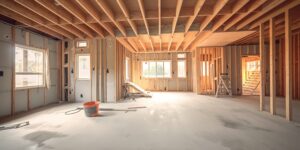This year has had many highs and lows—home prices, inventory, builder confidence, interest rates. Just about every aspect of the industry has experienced some level of volatility.
The fourth quarter doesn’t appear to be any different.
Here’s a look at three key issues that should be on builders’ radars for the home stretch of 2023 and start of the new year.
End-of-Year Closings
Housing affordability has been the headline for most of 2023. Q4 begins with mortgage rates north of 7%. The Fed has indicated at least one more rate hike is likely before the end of the year. That has many potential buyers priced out of the market and would-be sellers holding onto their homes to maintain a low interest rate.
Home prices are down slightly heading into the fourth quarter, but low inventory is keeping price tags elevated. According to Palisades Group, inventory is 46% below the historical average dating back to 1999. The outsized demand compared to supply of houses will take years to fix, so do not plan on a huge price correction across the market anytime soon. Housing analysts expect the trifecta of low inventory, high prices, and rising interest rates to keep mortgage originations low for the rest of the year.
But this is a “glass half full” situation for builders. New construction is bouncing back quicker than the rest of the market. New home sales were up 4.4% heading into Q4 with new home mortgage applications posting a 35.5% year-over-year increase. Nearly half of the applications represent FHA-insured loans, which indicates an upswing in first-time buyers. Year-over-year, new home sales have surged by almost 32% while existing-home sales lag.
Despite the positive news for builders, the need for incentives will stick around for a while. Expect to make some concessions to close the deal. The end of Q3 showed about 25% of builders offering sales cuts while other sales-sparking incentives increased by 3%.
Budgeting for 2024
Building material costs are in a slight downswing from their historic highs of 2022. Prices for key input commodities should continue to fall throughout 2024. However, the decline may amount to approximately 1-2% per year overall, compared to the 19% jump since 2020. A “return to normal” simply won’t happen. Key factors keeping prices high include increased construction demand, labor shortages, higher-than-normal inflation, and a rise in near-shoring materials. Prices from energy transition trends also have costs climbing.
Your materials budget may look slightly better in the coming year, but the double-digit increases of wood, steel, electrical conduit, and insulation from recent years are here to stay.
The pandemic had homebuyers looking for more space. Now high prices and interest rates have people going smaller to stretch their dollars. That has builders planning to construct more entry-level properties on smaller lots to lower construction costs and purchase prices. The same strategy has plans for new townhome builds on the books.
According to the National Association of Home Builders, the number of affordable properties under construction will be 6% higher than 2023.
These houses will look much different from the bells and whistles many new homes offered in the last several years. To cut down on costs, carpeting and vinyl will replace hardwood floors and granite countertops. Think function over form as both builders and buyers try to save money—especially as builders allocate more budget to mortgage buydowns to move homes.
Insurance Renewals
Expect insurance to comprise a big part of the 2024 budget as well. Q4 is renewal negotiation time for many builders. The hard market conditions from recent years—higher premiums for less coverage—will continue. Expect annual price increases north of 5%.
If the year-over-year price hikes have you weary, now may be the time to look at some creative insurance solutions. Here are a few we see gaining traction:
- Individual disability insurance (IDI) – IDI plans cover individual people within the company to supplement the group plan or offer unique coverage to specific employees. The policies generally have higher premiums but come with better benefits because they are individually underwritten. The coverage strategy can help lessen the costs of a group plan by insuring certain high-worth or high-risk individuals separately.
- Wrap-up insurance – These liability policies serve as all-encompassing insurance designed to protect every contractor and subcontractor working on large, high-worth projects. Ensuring every third-party has adequate, active insurance is arduous and error prone. Any downstream liabilities created by underinsured contractors can become an out-of-pocket cost for upstream entities. Wrap-up insurance gives all parties the correct coverage for their work on a project. The builder can pay for the coverage or charge the fee back to contractors and subcontractors.
- Loss-sensitive policies – These types of insurance plans assess a final premium dependent on the actual losses incurred during the coverage. The model lessens upfront costs and rewards builders for minimizing losses. Common types of loss-sensitive policies include deductible plans, retrospective rating plans, dividend plans, and retention plans.
Planning for Q4 and Beyond
The most recent National Association of Home Builders/Wells Fargo Housing Market Index showed a slight decline in builder sentiment. Despite the dip, builders still see good conditions ahead for new construction. No, overall conditions aren’t ideal, but there are advantageous bright spots. Plus, you have an industry partner by your side to manage the risk with PWSC. Learn more about our builder and insurance-backed warranties at https://www.pwsc.com/builders/.




